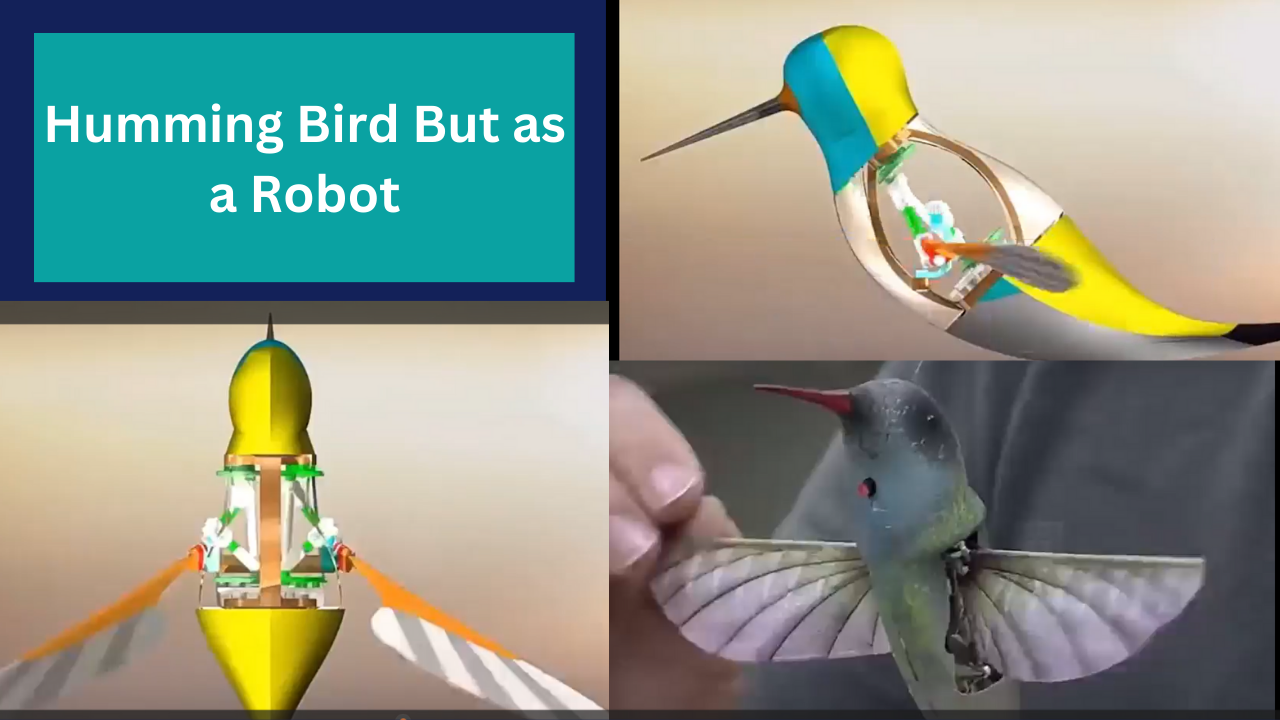Humming Bird As a robot, though. Drones searching for stranded people might move more easily across crumbling structures and other crowded areas if they possessed this combination.
By using machine learning algorithms that are based on the several strategies that hummingbirds naturally employ on a daily basis, Purdue University researchers have created flying robots that exhibit hummingbird-like behavior.

Humming Bird As a robot
This indicates that the robot “knows” how to move around like a hummingbird would after learning from a simulation, including when to execute an escape maneuver.
Together with its pliable flapping wings, artificial intelligence also enables the robot to learn new abilities on its own. For example, the robot detects via touching surfaces even if it is not yet able to sight. The researchers discovered they could track the electrical current that is altered with each contact.
In essence, the robot can draw a map without being able to perceive its surroundings. This implies one fewer sensor to add when we do give the robot the capacity to see, which may be useful in a scenario where it would be looking for victims in a dark area, according to Purdue University associate professor of mechanical engineering Xinyan Deng.

Humming Bird As a robot
Because of the limitations of traditional aerodynamics, drones cannot be made endlessly tiny. It would be impossible for them to provide enough lift to sustain their weight. However, hummingbirds’ wings are robust, and they don’t employ traditional aerodynamics. “The aerodynamics is naturally unstable, with high angles of attack and high lift; the physics are just different.” This enables the existence of smaller flying creatures as well as the reduction of flapping wing robots in size, according to Deng.
Decoding hummingbird flying has been a long-standing goal of researchers, who hope to enable robots to fly in areas inaccessible to bigger aircraft. In 2011, the U.S. Department of Defense’s DARPA agency commissioned the company Aero Vironment to build a robotic hummingbird. It was slower than a genuine one, but it was heavier, and it had limited mobility and flying controls similar to those of a helicopter. It needed a person to always be in front of a remote control. Deng’s team spent many summers in Montana studying hummingbirds directly with her partners. Important hummingbird movements, such a quick 180-degree turn, were recorded and converted into computer algorithms that the robot could use as a learning tool when it was connected to a simulation.
Purdue researchers were able to construct robots that were smaller than hummingbirds and even as small as insects without sacrificing their ability to fly because to more studies on the physics of insects and hummingbirds. According to Deng, the smaller the size, the more frequently their wings flap and the more effectively they fly. The robots’ bodies are 3D printed, while their carbon fiber wings and membranes are carved using a laser. One robot designed to resemble a spectacular hummingbird, weighing 12 grams, and another robot like an insect, weighing 1 gram, have been constructed by the researchers. Up to 27 grams, the hummingbird robot is capable of lifting objects heavier than it is.
By building their robots with more lift, the researchers have greater flexibility when it comes to adding a battery and other sensing components, like a GPS or camera. The robot now requires an energy source to be attached to it in order to fly, but the researchers anticipate that this requirement will soon be lifted.
The robots would be more suitable for clandestine operations if they could fly as softly as a real hummingbird. Additionally, they maintain their stability in the face of turbulence, as the researchers tested the dynamically scaled wings in an oil tank.
The robot can do very agile maneuvers similar to those of flying animals in nature, requiring only two motors to operate each wing independently of the other.
“To achieve optimal performance with minimum weight, a robot should be as light as possible. An actual hummingbird has multiple muscle groups for power and steering strokes,” explained Deng.
In addition to aiding in search and rescue operations, robotic hummingbirds would make it possible for researchers to more accurately study hummingbirds in their native habitat by using the senses of a lifelike robot.
“Biology taught us how to build the robot, and now with additional assistance from robots, biological discoveries can happen,” stated Deng. Github offers open-source simulations of the technology.
The National Science Foundation provided funding assistance for the initial phases of the project, which included the Montana hummingbird tests conducted in conjunction with Bret Tobalske’s group at the University of Montana.
As part of Purdue’s 150th anniversary celebration, this study is in line with the university’s Giant Leaps initiative, which recognizes the global achievements achieved in artificial intelligence, algorithms, and automation. This is one of the four topics of Purdue’s annual Ideas Festival, which aims to present the university as a hub for thought that addresses pressing social concerns.
Read More: The Future of Smart Speed Bump
Read More: High-Performance Concrete Build Business Case Value



